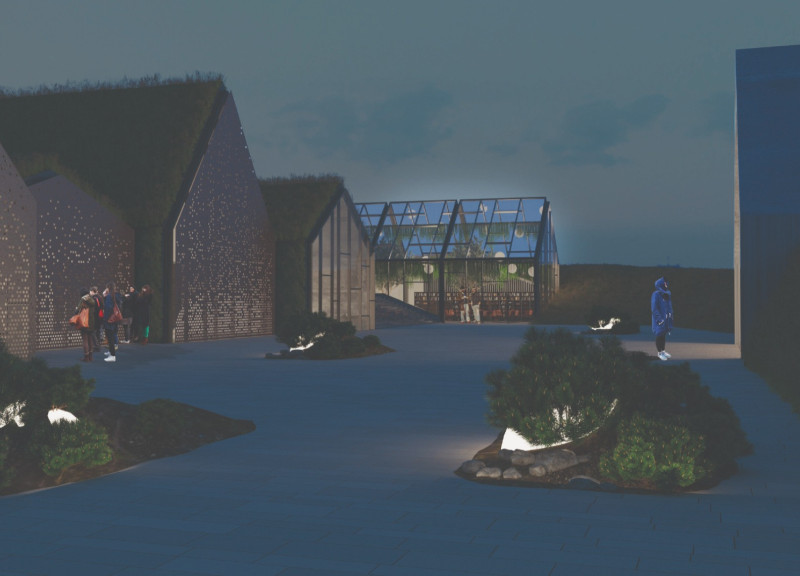5 key facts about this project
The design represents a thoughtful response to Iceland’s geological characteristics. By drawing inspiration from Icelandic turf houses, the architecture harmonizes with the rugged landscape, utilizing natural materials to enhance its integration with the environment. Through this design approach, the museum embodies a sense of place that resonates with local tradition and cultural significance.
Spatial Organization and Design Features
The museum's layout is configured to create a coherent flow between distinct areas, promoting accessibility and visitor engagement. Key components of the design include exhibition halls, an information center, a café, and communal spaces designed for interaction.
Exhibition halls are adaptable, allowing for various types of displays and educational programs. This functionality is supported by high ceilings and strategically placed windows that optimize natural lighting while providing scenic views. The information center serves as a gateway for visitors, equipped with resources and guides to enhance their experience.
The café and shared spaces incorporate reclaimed wood and natural stone, reinforcing the focus on sustainability in the material choices. These elements encourage a communal atmosphere, facilitating gatherings and interaction among visitors.
Environmental Considerations and Innovative Design Approaches
The architectural design of the Iceland Volcano Museum reflects sensitivity to environmental conditions, utilizing features such as green roofs and wind shelters to improve energy efficiency and comfort. The green roofs not only contribute to insulation but also mimic the surrounding terrain, further blending the building into its natural surroundings.
Innovative approaches include the use of glass to create transparency and openness, allowing visitors to connect visually with the landscape. Perforated metal panels add a dynamic aesthetic to the façade and assist in regulating solar gain, balancing interior climate conditions.
Overall, the project exemplifies a commitment to sustainability, cultural resonance, and functional design tailored to the unique setting. The architectural details and spatial configurations work together to create a prominent educational venue that celebrates Iceland’s volcanic activity.
For a deeper understanding of the Iceland Volcano Museum, interested readers are encouraged to explore the architectural plans, sections, designs, and innovative ideas that define this project. Details available in the project presentation provide further insights into the architectural intent and execution of this evolving educational facility.


























